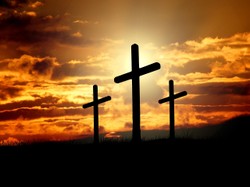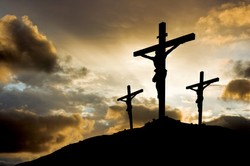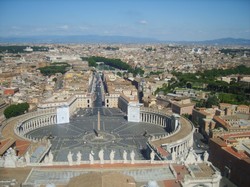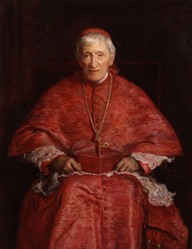Mary Magdalene was an important figure in early community, but we know little about her. A long-enduring error in the church is to confuse four separate women: Mary Magdalene, Mary of Bethany, the sister of Martha [herself one of the early community,]【 but like her sister, not a travelling one] was one such woman, and the other two included the woman taken in adultery and the sinful woman of Luke's Gospel. The latter two women have minor roles and then fade out of the story.. Joanna, the wife of Herod's steward, possibly a widow was among the women who visited Jesus' tomb, as was Mary wife of Cleopas. We know from the writings of Eusebius, a historian who recorded some historical information about Jesus' family, that St Joseph had a brother called Cleophas. This makes his wife Jesus' aunt. Cleophas turns up in the final chapter of Luke's Gospel, when he is named as one of the two travelers who encounter Jesus on the road to Emmaus. along with his son, probably Simeon, later to become bishop of Jerusalem
Not a lot is recorded of these women. The woman who anointed Jesus with a jar of Nard, an expensive perfume, ,is likely to have been Mary of Bethany,who seems to come from a family with plenty of money, as they seem to have been from a family who had property. Some Christian thinkers are of the opinion that Martha and Mary of Bethany, along with their brother Lazarus . were the children of Joseph of Arimathea, who was a scholarly member of the Sanhedrin, council, who in John 3 came to visit Jesus secretly at night to inquire about his identity and mission. But this claim is neither verified nor at this stage of scholarship verifiable. It might be correct, but we do not know.
Mary Magdalen is a mystery. She was not a woman of ill-repute, as I have said. Nor did she come from the town of Magdala, which only acquired the name some years after the death and resurrection of Jesus. Gnostic sources makea great deal of the relationship between Jesus and Mary Magdalen. Some Gnostics claimed that .jesus had married Mary but thereis no Gospel support for this belief. Certainly, Jesus included her among the women whom he taught. Mary seems to have been an emotional person who was very attached to Jesus. On resurrection day she was one of the women who visited the tomb to anointed and mourn Jesus, and this made her the first witness to the resurrection and the apostle to the apostles.




 TheThousand Year Garden28 days ago
TheThousand Year Garden28 days ago
 Religious Gardenson 08/25/2025
Religious Gardenson 08/25/2025
 Doctor of the Church: John Henry Newmanon 08/03/2025
Doctor of the Church: John Henry Newmanon 08/03/2025
 Restoring the Palm Houseon 07/16/2025
Restoring the Palm Houseon 07/16/2025



Comments
I donnot know of any who have done so
I donnot know of any who have done so
Thank you for your comment below in answer to my previous question.
Have any theologians pondered where that power peregrinated even as it slipped away from Jesus Christ?
If IKnew the answer to this question i would know more than any theologian past or present.
The next-to-last paragraph considers power loss through robe-touching.
How much and what kind of power did Jesus Christ lose?
Mary magdalen . Virgin mary was not formally canonised, but her canonisation. Was justnassumed.,
How many of these are canonized?
How many of these are canonized?
The gospels were written by men, who despite their learning from Jesus , retained residual attitudes to women. Not only were traditionally prejudiced views about women, but as the years went by men gradually took power, leaving women in aservile state
Ah, the women in the Gospels! Their stories are hard to fathom. As you wrote, we have insufficient information. And there are too many Marys - which has led to confusion! I do like your conclusion, that Jesus came to save people, whether they were male or female. It's taken a while, but perhaps we are finally in an age when women are becoming recognized, even equal in value to men.